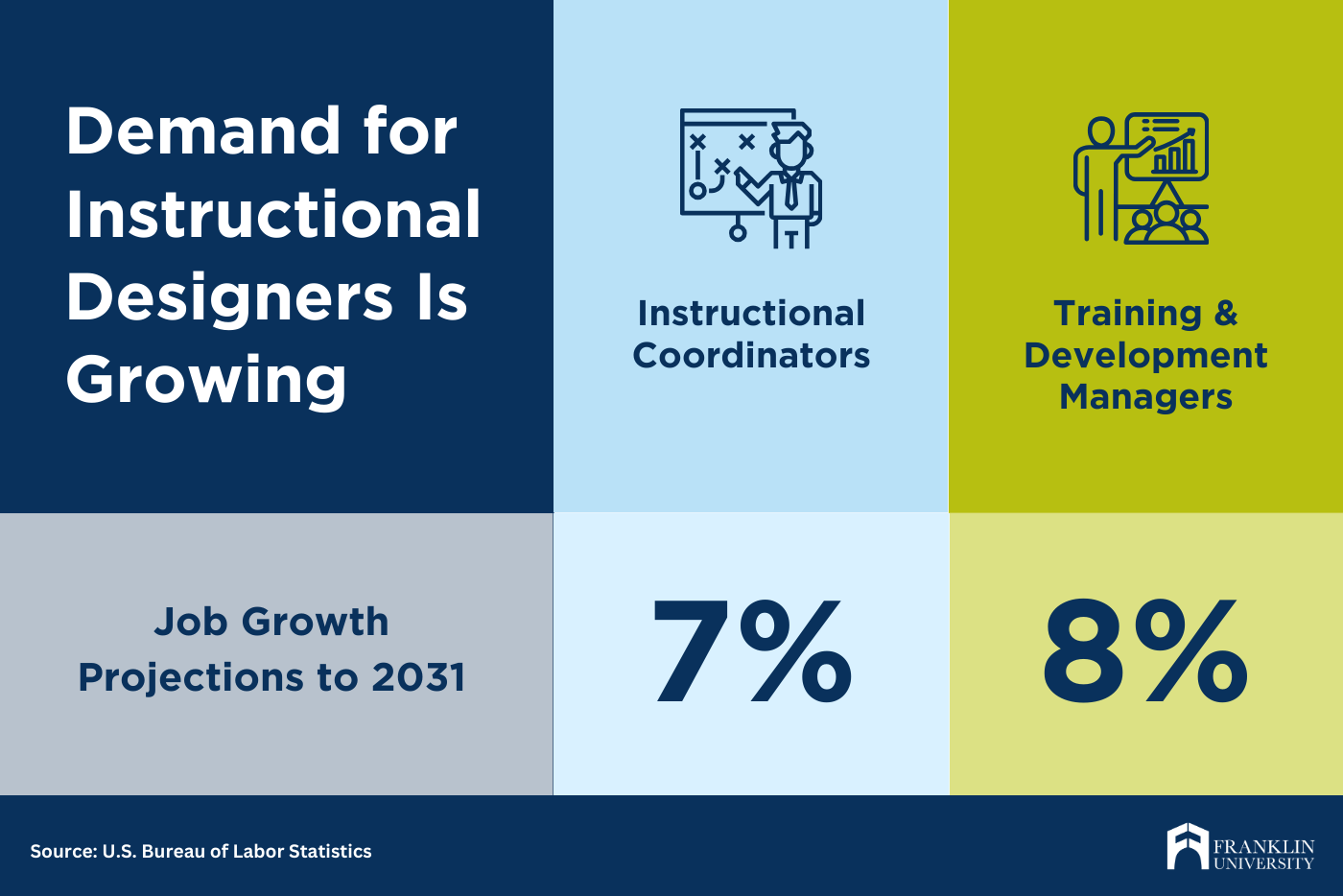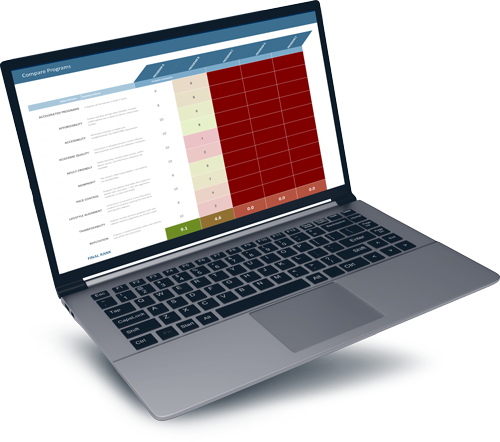

Nothing beats having a career you’re passionate about that also lets you make a difference for your organization and its people. That’s instructional design.
This incredibly dynamic and in-demand career offers opportunities across a wide variety of industries and various workplace settings. In fact, according to labor market analytics firm Lightcast, master’s and doctoral degree completions for the field grew by 7% from 2017 to 2021.

And, according to the U.S. Bureau of Labor Statistics (BLS) the job outlook for those with an instructional design degree is on the rise, too, with a 7% growth rate projected for instructional coordinators by 2031 and an 8% growth rate for training and development managers for the same time period.
Perhaps most importantly, learning and development is a booming industry. Instructional designers are needed wherever people need training. And people everywhere need training, says a workplace learning and development trends report from the Society for HR Management (SHRM). In fact, 9 in 10 workers say they want workplace training on hard skills and 8 out of 10 desire training on soft skills.
So, whether you’re the creative, teaching or analytic type, there are plenty of career opportunities in instructional design.
A master’s- or doctorate in instructional design is a graduate-level degree designed to prepare you to analyze learning needs, systematically design learning experiences and products, and assess learning effectiveness. Learning experiences and products can include online courses, instruction manuals, simulations and video-based learning. You may also see an instructional design degree referred to as an educational technology degree, learning design and technology degree, or instructional design and technology degree.
“In a nutshell, a degree in instructional design teaches people how to use learning theories and models to better design teaching curriculum and training so that learning is more effective,” says Yi Yang, Ph.D., chair of the master’s and doctoral programs in Instructional Design for Franklin University. “Immersive and effective educational experiences are crucial to equipping people and maximizing their effectiveness.”
Although an instructional design degree often appeals to educators, it’s a great degree for those working in corporate, government, nonprofit and healthcare settings, too.
The M.S. Instructional Design & Learning Technology degree program requires about 32 credit hours and can be completed in approximately 16 months. Or you could finish a Doctor of Professional Studies (DPS) - Instructional Design Leadership degree, which requires 58 credit hours, in as few as three years.
An instructional design degree from an institutionally accredited university will introduce you to the foundations of instructional design, including its theories and applications. It also will prepare you to use modern learning technologies to design high-quality, consistent training with well-defined learning outcomes.
“As the saying goes, ‘Theory without practice is empty and practice without theory is blind,’” says Dr. Yang, “so it’s critical to find a degree program that gives you both.”
According to Lightcast there are literally thousands of job opportunities that fall under these occupational categories:
In 2023, these occupations had a median advertised salary of $70,000 annually. In addition, of the 15,885 unique job postings, 15% advertised a maximum average salary that ranged from $150,000 to $400,000 a year.
Here are the top posted job titles for instructional design graduates:

The role of instructional designer dates back to the 1940s but only took on new prominence during the 2020-21 global pandemic.
“Many people were scrambling to put curriculum online during the COVID-19 crisis,” explains Dr. Yang, “but teaching in person is very different from teaching online. The missing piece, of course, was face-to-face instruction. That’s why it's essential to have someone–an instructional designer–who knows how to make sure that every course has a clear structure and measurable learning outcomes.”
“In business, human capital is everything,” says Dr. Yang. “Instructional designers do the work of preparing people for success. In our degree programs we have students working in all fields. Take healthcare for example, nurses need to learn procedures, physicians need to learn ethical considerations, customer care needs to be trained on working with patients, and all users need to be trained on new systems and technologies. But healthcare isn’t the only industry in need. From Microsoft to Amazon to Chase to Nationwide, just about any organization that provides training for its employees needs instructional design leaders.”
According to Lightcast, here are just a few of many types of organizations and industries looking for instructional designers right now:
.png)
Top Companies
Top Industries
As an instructional designer, your work can range from onboarding new employees, to aligning performance with your organization’s strategic plan, vision and mission, to creating a workable action plan to solve performance-related problems.
So, no matter which career path you choose, your instructional design degree can help you determine the best method of training to lead your organization and its workforce to the next level.
Ready to develop your instructional design expertise and launch an instructional design and technology career? Explore your degree options now.
Free Master's Toolkit
Download Now